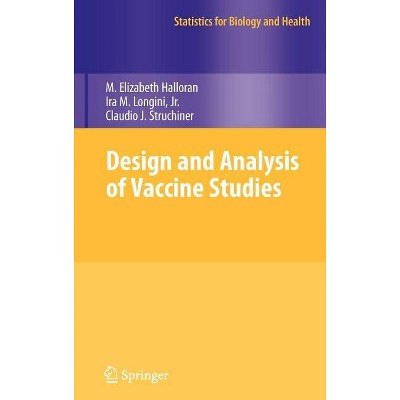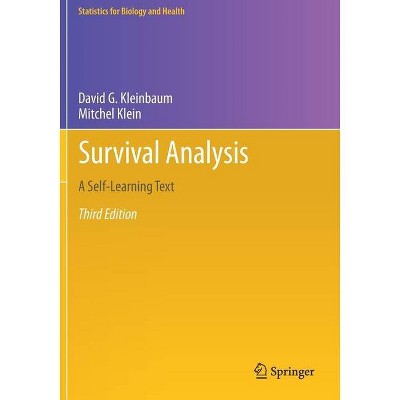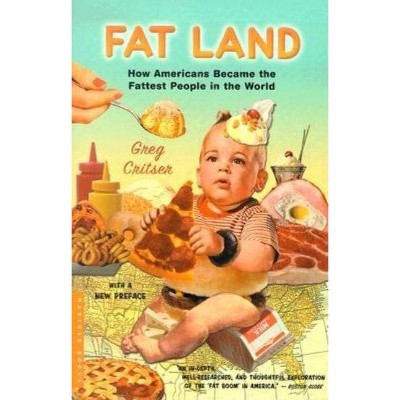Design and Analysis of Vaccine Studies - (Statistics for Biology and Health) by M Elizabeth Halloran & Ira M Longini Jr & Claudio J Struchiner

Similar Products
Products of same category from the store
AllProduct info
<p/><br></br><p><b> About the Book </b></p></br></br><p>As well as being a reference for the design, analysis, and interpretation of vaccine studies, the text covers all design and analysis stages, from vaccine development to post-licensure surveillance, presenting likelihood, frequentists, and Bayesian approaches.</p><p/><br></br><p><b> Book Synopsis </b></p></br></br>Immunizationisoneofthegreatadvancesinpublichealth. Figure0. 1showsacamel with a solar-powered refrigerator on his back carrying vaccines across a hot desert to the far reaches of civilization. Many vaccines contain live viruses that need to be kept cold, or the vaccine viruses will die, and the vaccines will lose their ability to produce an immune response. Thus a continuous chain of refrigeration, the cold chain, from the origin to delivery of some vaccines needs to be maintained. The inspiration of the camel image is that it represents the dedication of the world to bring vaccines to everyone. The ?rst major success, and the origin of the word vaccination (vacca for cow), was Jenner's introducing cowpox-based vaccine against smallpox in the late 18th century. After nearly a century hiatus, at the end of the 19th century, inoculations against cholera, typhoid, plague (caused by bacteria) and rabies (caused by a virus) were developed. By the early 20th century, statisticians of the stature of Karl Pe- son, Major Greenwood, and Udny Yule were heartily involved in discussions of evaluating these vaccines in the ?eld. In the 1920s, new vaccines included pert- sis, diptheria, tetanus, and bacille Calmette-Guerin ´ against tuberculosis. The 1930s saw development of yellow fever, in?uenza, and rickettsia vaccines. After World War II, the advent of cell cultures in which viruses could grow enabled production of polio vaccine and vaccines against measles, mumps, rubella, varicella, and a- novirus, among others (Plotkin et al 2008).<p/><br></br><p><b> From the Back Cover </b></p></br></br><p>Widespread immunization has many different kinds of effects in individuals and populations, including in the unvaccinated individuals. The challenge is in understanding and estimating all of these effects. This book presents a unified conceptual framework of the different effects of vaccination at the individual and at the population level. The book covers many different vaccine effects, including vaccine efficacy for susceptibility, for disease, for post-infection outcomes, and for infectiousness. The book includes methods for evaluating indirect, total and overall effects of vaccination programs in populations. Topics include household studies, evaluating correlates of immune protection, and applications of casual inference. Material on concepts of infectious disease epidemiology, transmission models, casual inference, and vaccines provides background for the reader. This is the first book to present vaccine evaluation in this comprehensive conceptual framework.</p> <p>This book is intended for colleagues and students in statistics, biostatistics, epidemiology, and infectious diseases. Most essential concepts are described in simple language accessible to epidemiologists, followed by technical material accessible to statisticians.</p> <p>M. Elizabeth Halloran and Ira Longini are professors of biostatistics at the University of Washington and the Fred Hutchinson Cancer Research Center in Seattle. Claudio Struchiner is professor of epidemiology and biostatistics at the Brazilian School of Public Health of the Oswaldo Cruz Foundation in Rio de Janeiro. The authors are prominent researchers in the area. Halloran and Struchiner developed the study designs for dependent happenings to delineate indirect, total, and overall effects. Halloran has made contributions at the interface of epidemiological methods, causal inference, and transmission dynamics. Longini works in the area of stochastic processes applied to epidemiological infectious disease problems, specializing in the mathematical and statistical theory of epidemics. Struchiner has contributed to understanding the role of transmission in interpreting vaccine effects.</p><p/><br></br><p><b> Review Quotes </b></p></br></br><br><p>From the reviews: </p><p>"...The first comprehensive book on the topic of vaccine trials, their design and analysis. Given the recent interest in developing vaccines, ...the book is timely, relevant and important. The authors are in the vanguard of the statistical and epidemiology aspects of vaccine research and development, and their combined expertise covers an impressively broad range of topics. ...Useful for a diverse audience: graduate students, practicing biostatisticians, and professionals in epidemiology and infectious diseases." (Journal of Biopharmaceutical Statistics)</p><p>"In their recent book ... Halloran, Longini, Struchiner present many years of research on such studies much of which they have conducted. The book is aimed at three audiences: researchers specializing in vaccines and infectious diseases, those aiming to read their studies and students in related fields ... . The book includes problems at the end of each chapter along with answers ... . this is a well written and informative book. I recommend it to anyone interested in learning about vaccine studies." (Matthew C. Wiener, Technometrics, Vol. 53 (1), February, 2011)</p><p>"Researchers and postgraduate students in infectious disease epidemiology and biostatistics. ... useful to every practicing biostatistician and epidemiologist in the field. ... the authors have succeeded in writing an impressive overview of a complex topic. ... the book belongs to the shelf of all those interested in the analysis of infectious disease data. More generally, the book serves a useful textbook of statistics applied to real-life problems in which the balance between substantive research questions and the availability of data always remains an issue." (Kari Auranen, International Statistical Review, Vol. 78 (3), 2010)</p><p>"The book's main audience comprises two groups: clinical/basic scientists involved in research in vaccine studies and students/researchers in statistics/epidemiology interested in statistical methodologies for evaluating vaccination efficacy. ... reader interested in more technical details is provided with adequate references. ... Every aspiring statistical researcher and epidemiologist interested in vaccine studies should have this book on his or her shelf as an essential guide and reference for learning the subject, understanding the current state of the literature ... ." (Debajyoti Sinha, Journal of the American Statistical Association, June, 2011)</p><p>"Any book targeting a wide audience with technical material confronts the problem of balancing rigor with accessibility. Design and Analysis of Vaccine Studies largely succeeds at this task. A cursory reading of this book will give readers an understanding of the concepts and techniques needed to successfully analyze vaccine studies ... . Halloran, Longini, and Struchiner have produced a text that can serve as a valuable resource for epidemiologists, biostatisticians, and anyone interested in the design and analysis of vaccine studies." (Derek A. T. Cummings and Justin Lessler, American Journal of Epidemiology, Vol. 174 (7), October, 2011)</p><br>
Price History
Price Archive shows prices from various stores, lets you see history and find the cheapest. There is no actual sale on the website. For all support, inquiry and suggestion messages communication@pricearchive.us




















